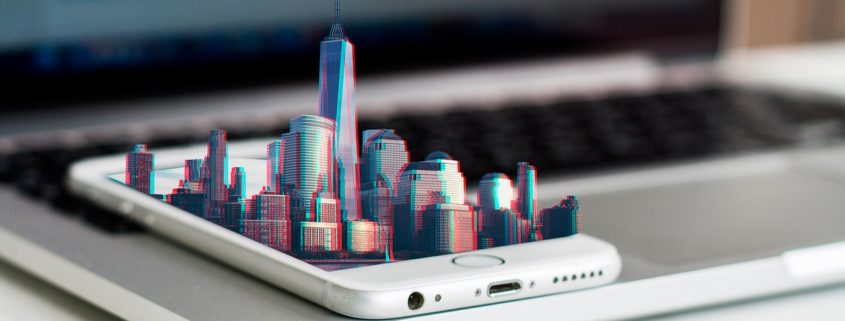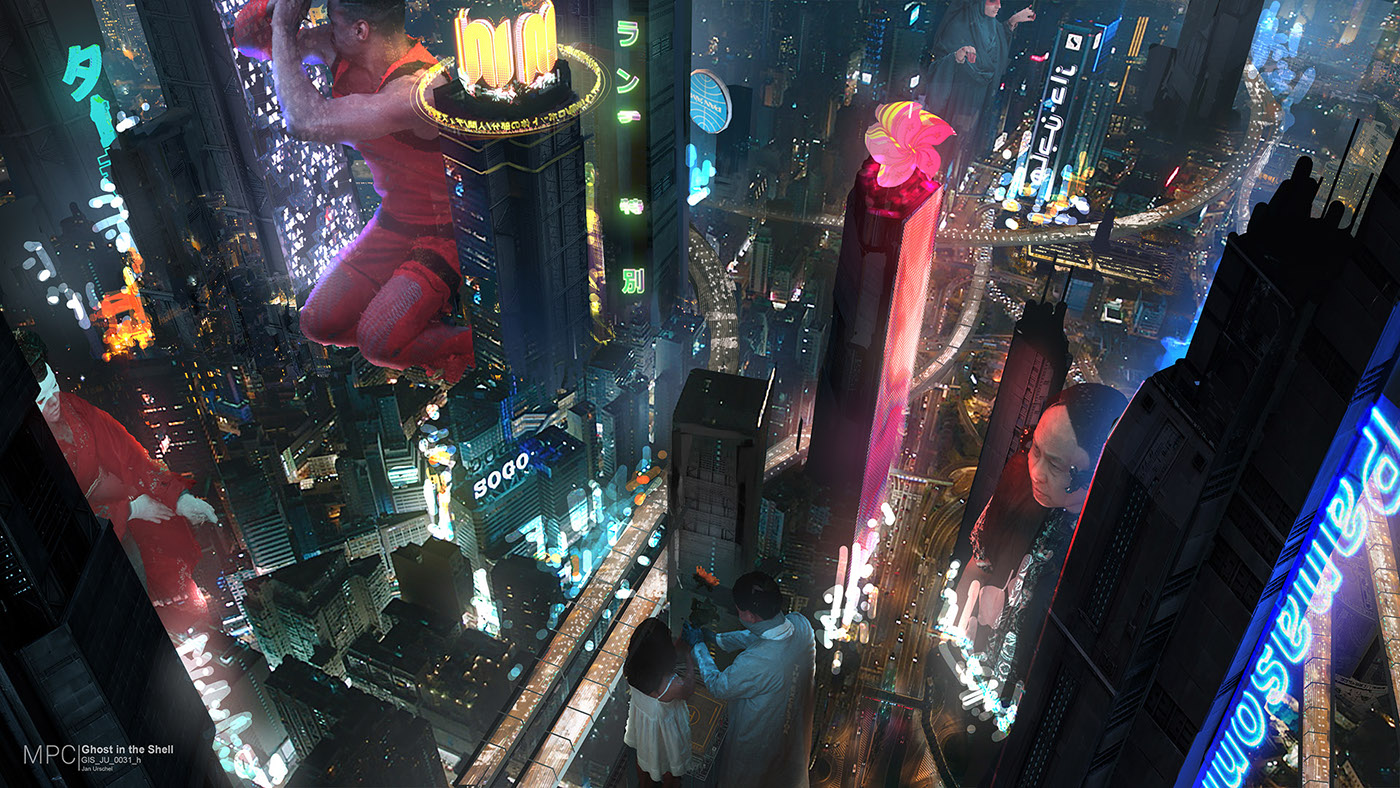Meet Mixed Reality Cloud: Augmenting Our Reality
It has been a year of firsts for StartupYard. In Batch 8, we’ve invested in our first vr company, our first Regtech company, our first Proptech company, and finally, our first Augmented Reality (AR), or “Mixed Reality” company as well.
Mixed Reality Cloud, headed by Adam Roszyk, is working on their first augmented reality product: Cloud Stories. It’s a “Photoshop for AR,” allowing creatives in advertising and digital agencies to create AR experiences for brands with no coding, and no need for a specialized IT development team. Roszyk’s mission, as a long time AR geek and a serial entrepreneur from Poland, is to push AR out of the realm of geeky ideas, and into the mainstream, by helping brands to create compelling content and experiences that blend with our reality.

The future of advertising (and content), is AR. Where will your customers be in 5 years? I talked with Adam about the project this week:
Hi Adam, first of all, I think we all need a little education on the difference between Augmented Reality (AR), and Virtual Reality (VR). What is the difference, and what does Mixed Reality Cloud do?
Hi Lloyd, first of all if our readers haven’t yet tried Virtual Reality – they’re missing something important. Both VR and AR are new types of human-computer interaction. They will replace keyboards and screens in the coming years.
For me, the difference between VR and AR is similar to how a PC is different from your smartphone – VR is like a PC, or game console – it cuts you off from the real world to take you to the center of a story, game or movie. It requires full dedication.
AR is lighter, but even more powerful – it’s gonna replace your smartphone. It allows a computer to overlay objects and information onto the real world, in a way that feels natural.
This “overlay” of information will be similar to what a smartphone gives you now, but will exist in forms more connected with real objects. It will allow computers to give us much more timely and useful data, based on what we see, not what we type and tap. It’s everything a smartphone can do, but without having to look at a hunk of metal and glass all the time.

Adam Rosyzch, Founder and CEO at Mixed Reality Cloud
If you think about it, we have been familiar with the AR concept for many years as a society, via Sci-Fi films like The Terminator, or Iron Man. AR is great for film because it eliminates the very non-human, nonorganic idea of staring at a screen all the time to get data and use a computer. It has been used to show audiences how a computer thinks and decides things.
Very soon, we will start seeing how average people will enrich their environments using AR.
That’s what we are working to do. Mixed Reality Cloud is like Photoshop for Augmented Reality. It’s a set of tools to build AR applications. We do that by creating a virtual space in which a designer can create and test ideas, and then deploy them to the real world in AR experiences.
AR experiences are amazing for mixing ideas with the real world around us. How does a new car look in your driveway? How does a lamp look in your living room? How cool would it be to have your favorite Pixar characters walking around your house?
We don’t currently have software specially made to design and build things in Augmented Reality, and make those experiences accessible for ordinary people.
There are great 3d engines, that try to support AR as well, but at their core they will stay 3d engines forever. We’re AR at heart, and we’re focused only on tools which are necessary to bring AR to everyday life.
What’s your background in technology, and how did you come to found your own company?
I was studying CS at University of Adam Mickiewicz in Poland, where I started my first company, FunBrush. It was an IoT connected toothbrush to make brushing teeth more fun for children. It allowed kids to watch a screen and play a game while brushing their teeth, and parents and kids loved it. I raised funding at a $1mln valuation for this company, and led it from idea, to first clients, but we failed with scaling up the project.
I think the idea was a bit ahead of its time. The technology wasn’t common enough yet to make it easy to adopt. But that’s life.
After that, in 2015 I moved to San Francisco to work at VicariousVR – where for the first time in my life I tried VR myself.
Is the Hype over AR/VR overblown right now, or is something bigger happening?
VR has been overhyped many times in the past. The promise of the tech has always been too big for what we could actually do.
Now the market is slowly realizing its true potential. Every month we see more and more examples of new industries adopting it as a tool; graphic designers, architects, data analytics, or even armies.
VR still has many problems – it’s tethered to expensive pcs, you need tracking devices, there’s no keyboard in VR, etc. However – it’s like the first Mac computers: first we see entertainment and business use cases, then devices get cheaper, operating systems get smarter, and most important there are tools, which can be used only in VR. Businesses begin to see an advantage over those who are not using it yet. Then we’re gonna see way more broad adoption.
AR on the other hand seems to be underhyped, really but isn’t. We still don’t realize how much it’s gonna change our everyday life.
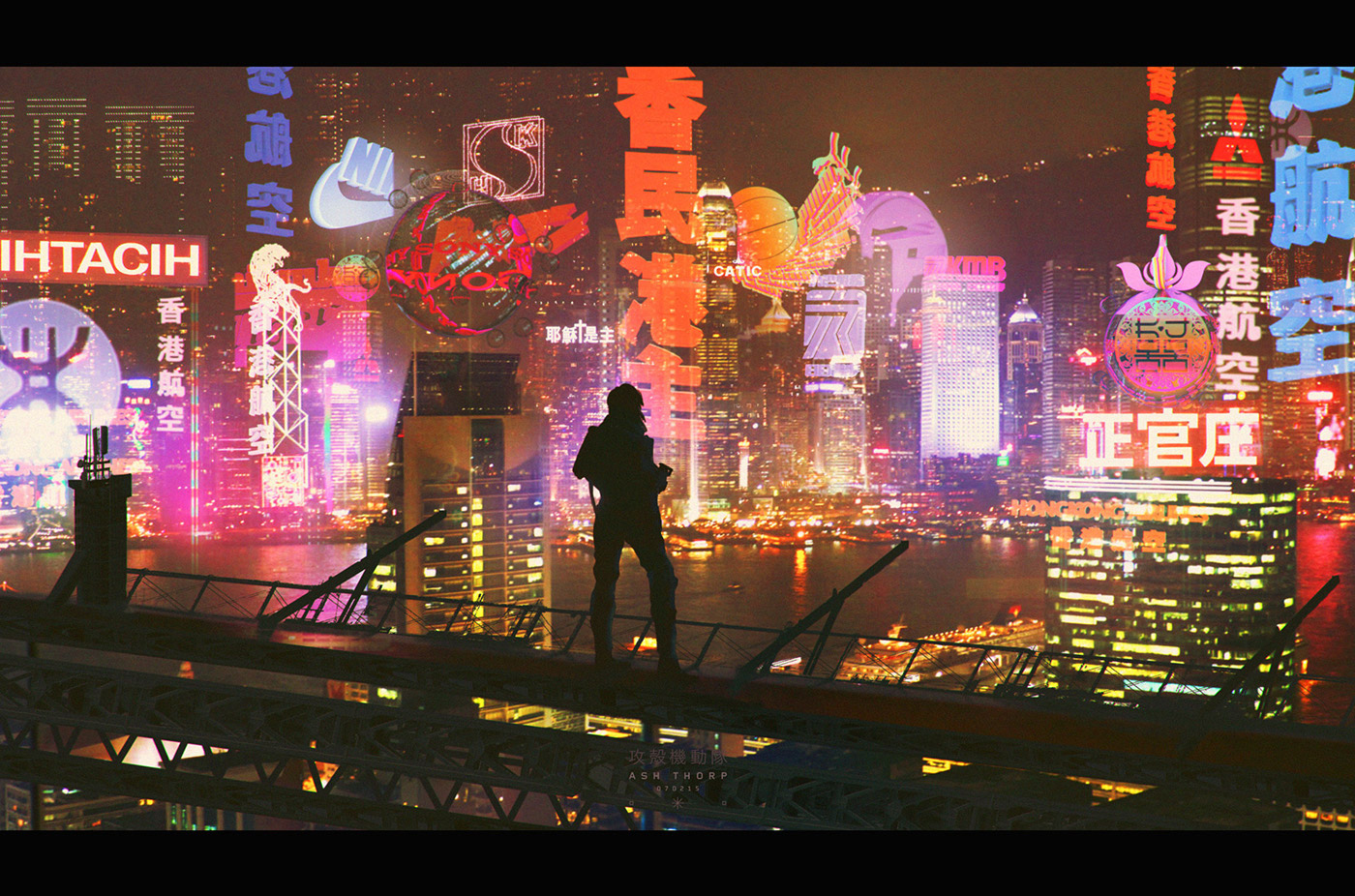
The 2017 film Ghost in the Shell demonstrated the potential uses of Mixed Reality
We’re in the Node5 – everyone is sitting in front of their desk typing on a keyboard and staring at a tiny monitor in front of them. Let me just remind you of something: that is not some law of ergonomics, and it is not the way people worked even 50 years ago. It won’t be the way we are working 50 years from now either.
Having lived with AR for years, this arrangement already seems old-fashioned to me.
AR will allow people to work wherever they want, without any other physical devices. You know – computers let people get rid of calendars, rollodexes, calculators etc. Eventually they allowed us to move our work from the desk to the cafe, and have everything with us.
And now AR will help us get rid of the desks and computers completely. You just won’t need them, any more than you need a physical rolodex.
Mixed Reality Cloud is focusing first on advertising agencies. Why are these a natural early adopter for the technology, and what problem do you solve for them?
That’s right. Creative and digital departments in advertising agencies are our first customers.
It’s because those people are the ones who already recognize the potential of AR, and they already gets requests from their clients about creating AR experiences. Ikea just released an AR app for phones, where you can see how a sofa will look in your living room before buying it. That’s just the obvious stuff.
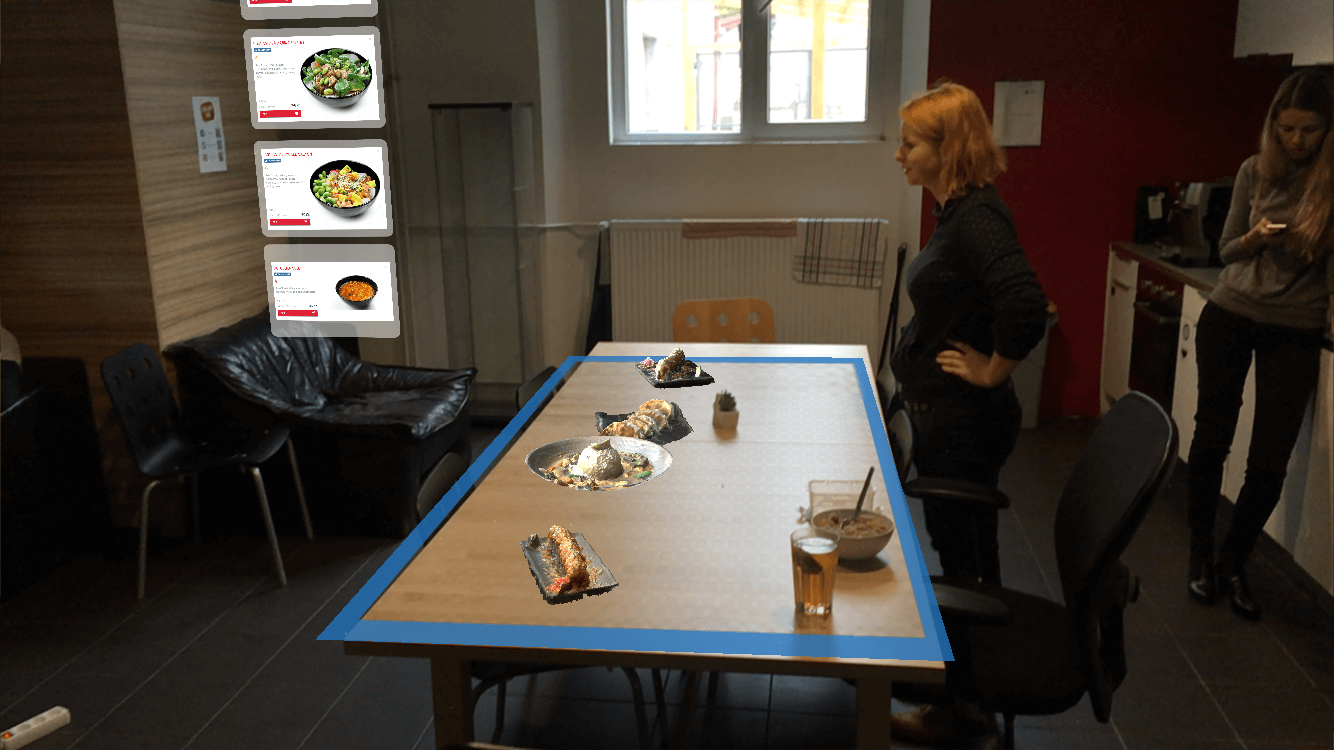
Using Mixed Reality Cloud to look at some food items that aren’t really there.
Every business can came up with a similar case of how AR can help them promote, sell, or educate their prospects. I think the first big innovations in this area will come from content, gaming, and advertising – that is the classic progression for a new medium.
But the problem is that marketing agencies don’t have the tools or the know-how required to offer AR to their clients. That’s why they’re using our first product – Cloud Stories – to fill the gap in their production toolchain, and have a tool – which allows them to deliver high quality AR content quickly.
You’ve been talking to a lot of potential customers in advertising and design. How do they see the future with AR advertising? What are some of the coolest ideas that might be mainstream soon?
Let’s dive 5 years into a future where you are using AR glasses everyday.
Anything is a control surface. Anything can be enriched with data, if you want it to be.
Just imagine how special your coffee mug is with those glasses: you can see how fresh it is, see how hot it is, or make sure you don’t accidentally start drinking from the wrong one.
Now your calendar, news feed, or maybe even your Slack channel are a gallery of holograms. These data take the shape you choose, and appear when and where you want them, making it easy to share them, experience them, and get the best use from them.
Or you can have a look at a bike you’ve been thinking about buying recently. And it’s beautiful – on roads of Toskania, late in the evening, displayed as a highly polished 3d animation right in front of you.
Everything will change with AR. With AR everything around you will have an internet connection– through you. Floors, doors, newspapers, credit cards – also everything will have it’s own interface, yes – every physical object you want- will have any additional layer of information you want it to have.
Putting control surfaces on objects will be as easy as grabbing a new app today. Probably easier. Buying products will be a smarter experience: you won’t waste as much, because you can see how a thing will really work, and if you really need it.
You’re buying a tent – isn’t it difficult to buy one online ? How do you know if that size is right ? With AR, you can set up a campsite in your garden and buy everything you need from AR. You can see and really think through your decisions, and make smarter ones.
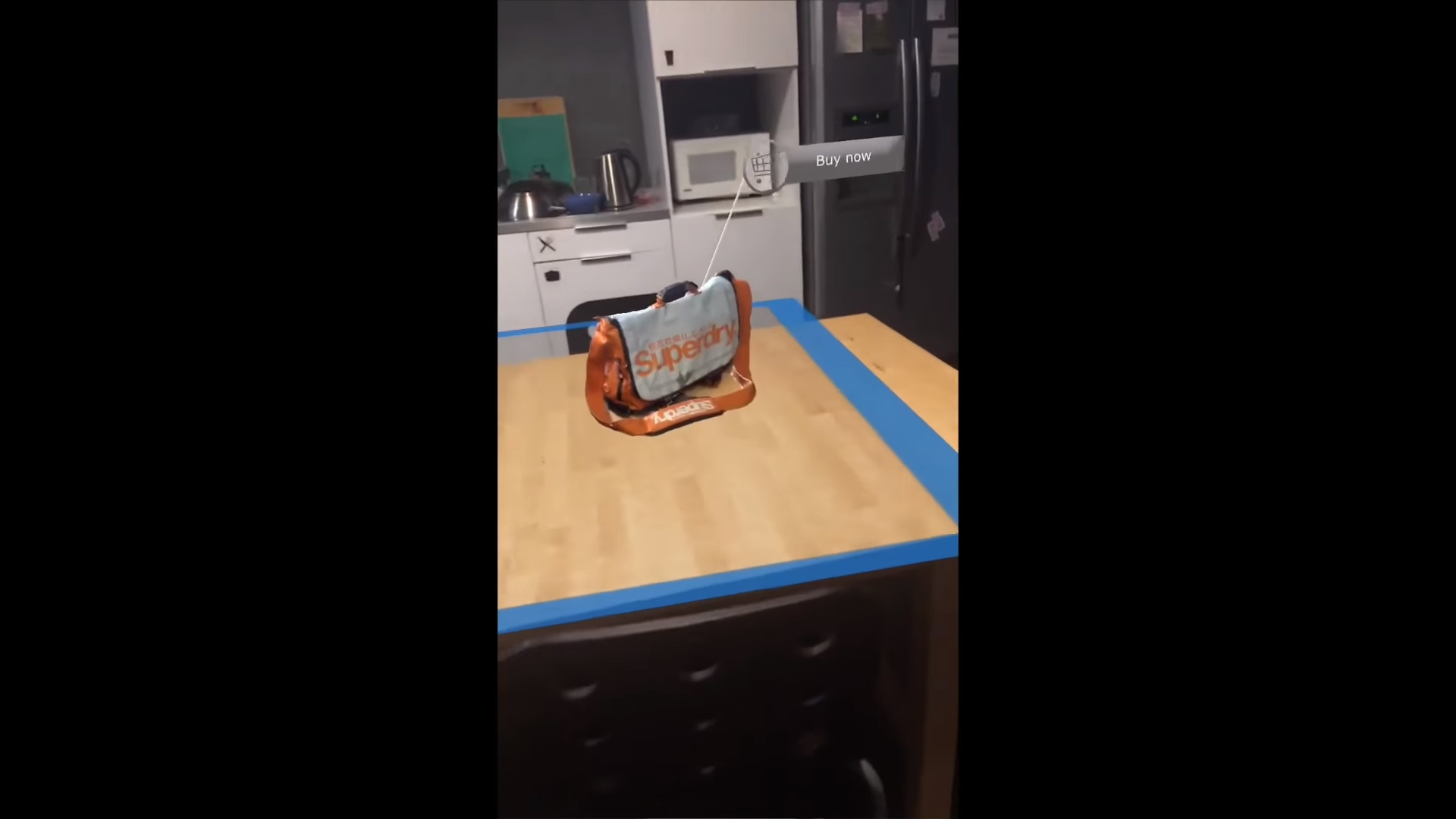
A bag presented in AR via Mixed Reality Cloud- it’s hard to tell it isn’t really there.
Imagine searching for a nice place for a date with your wife – wouldn’t it be cool to see 3d models of the places and dishes, instead of just flat 2d photos? That kind of thing can even be experienced on your existing smartphone – like a little window into the AR world.
AR will democratize 3d content – it’s a long process but we’re gonna get there. Now it’s time to build tools for capturing, creating, and editing this content.
Some people view this vision of the future as scary, or invasive. It’s a common idea in dystopian sci-fi, for example. Are these cultural critics wrong about the promise of AR?
Wrong is a strong word. I think in films and writing, you use these ideas to highlight the nature of people, and show how society can go wrong. So advertising and Augmented Reality are often mixed in sci-fi to exaggerate the problems of our current world onto a possible future.
You can learn from these visions, but remember that you have an effect on your own environment. People won’t accept things that they cannot accomodate in their lives, and many marketing strategies have failed because of that. In California, for example, they tried to play tv commercials at gas pumps and checkout lines in the grocery store. People hated it, and they went away. The truth is they didn’t make sense for the advertisers because of that.
We should look at marketing as more about trying to offer people things that are genuinely relevant for them, in the right time and place to help them make decisions. This idea of dystopian hyper-aggressive advertising is not nonsense, but it does ignore the point of branding, which is to be seen favorably.
Brands can use AR to do public art and competitions. They can do it to delight their customers, and there will be ways of shutting it all out, just like there are today. Still today, advertising is a “price” you pay to get something you want, it’s not a tax that everyone must pay no matter what.
Why should big brands embrace AR technology, instead of relying on existing channels and methods of delivery? What’s the unique benefit in AR?
You could ask me about the unique benefits of mobile advertising in 2009. There are many benefits in the technology, but what made brands embrace it was that the users spent their time on their mobile phones. It will be the same with AR: the brands will follow the users, and the most creative companies will be there first.
In the last 10 years, it became possible for a company to thrive on the power of one mobile app. And AR will be just like that.
On YouTube you had RedBull, or a million startups selling cool new gadgets that look amazing on video. On AR there will be a big opportunity for brands to shape their image for the new generation. The risk takers will be rewarded.
Teenagers are already native to these technologies. They just gets how it works immediately, like a natural progression from mobile phones. AR will become something as natural as the swipe, or pinch to zoom – it will go from something weird, to the being “the way computers work.”
Brands cannot afford to wait much longer.
What is the main technical challenge you’re facing with your technology right now, and how are you planning to solve it?
The key challenges are streaming 3d content to a range of devices like phones, and standardizing how we code 3d assets.
3d models are essential for Augmented Reality, but the problem is that they’re much heavier than 2d photos. To be smooth and natural, they need to work very reliably and fast.
That’s why we’re working on a streaming technology, which will let users downloads only parts of assets which are necessary right in the moment. We’re working also on our own format for 3d assets, which will make integration with other tools easier.
You’re one of the younger founders at just 25. How has the experience at StartupYard been for you? Do you think your age has had a big impact on your experience?
Startup Yard has been great for me, mainly because it was reality check for the idea and strategy behind our plan. Talking to 150 mentors in the first month gave us a great perspective on the market and the product fit. It would be impossible to organize such an intensive period without your help. Thank you for that.
There’s no too old or too young in startups. Execution, experience, network and knowledge – those are important things, which you need to consider. Iyou don’t have them, fix it. Get the proper help on your team.
.
Having no resources is a challenge, but having no resourcefulness is death. One thing you learn at StartupYard is how really to value the experience of others, and use it well.

Who has been your most important mentor from StartupYard, and why has that person been so influential?
I think that you Lloyd and Cedric have been the most important people in the program for me – always looking forward to hear my thoughts, share ideas, give your own perspective, and willing to show me what effects certain decisions have, before making them.
Darko Silajdžić, from DDB (one of the world’s biggest advertising firms) was really helpful – and in terms of validating our product ideas, Darko has had a profound impact as well.
How can people get access to the technology you’re working on, and start using it?
Sign up on our website to the newsletter about the latest/greatest in AR: www.cloudstories.io
Also you can read my medium, I write a lot about immersive technologies: https://medium.com/@RykAdam
Applications are open for StartupYard Batch 9!
Are you a startup, or an entrepreneur with a great Deep Tech idea?
Applications are now open.

